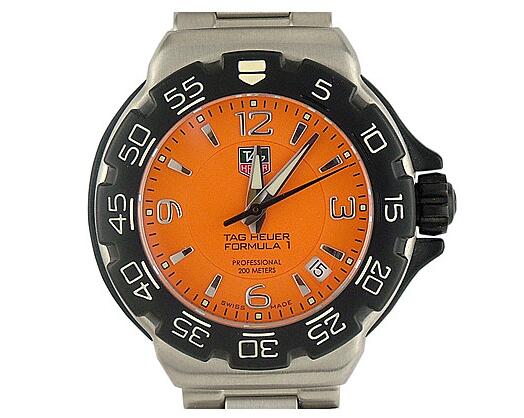The Tag Heuer Replica Formula 1 was introduced in 1986. Since then, it has become one of the brand’s most well-known and popular watch collections. Designed specifically for motorsport enthusiasts and professionals, it has been closely linked to the world of racing since its launch. Find out more about the great history of racing watches, different models and why you should buy this watch.
1 The story
In the late 1980s, the watch industry slowly recovered from the quartz crisis, which almost brought all mechanical watchmaking to a halt. In the area of sports watches, the market was dominated by straightforward tool watches. Tag Heuer decided to take a different approach and gave the Formula 1 collection the bright colors of the 80s and a plastic bezel – the new style was a strong response to the hype surrounding the popular Swatch watches.
There was also a close connection to motorsport, as was the case with the Carrera
Famous personalities such as Ayrton Senna, Brazilian racing driver of the 1980s, contributed to the popularity of the Tag Heuer Formula 1. In the 2000s, Tag Heuer launched the “What are you made of?” campaign with McLaren Formula 1 drivers such as Kimi Raikkonen, Juan-Pablo Montoya, David Coulthard, Mika Hakkinen, Fernando Alonso and Lewis Hamilton.

Formula 1 Series 3 (2004 – 2007): In 2004, the collection was fortunately lifted from the grave, with an adapted design and higher quality materials: the plastic bezel gave way to a stainless steel bezel coated with titanium carbide; The case was upgraded with sapphire crystal, numbers and indices were added. In addition, the case size increased to 40 mm. Series 3 was characterized by “bumpers” made of polyurethane on both sides of the case.
Formula 1 Series 4 (2007 – 2011): In 2007, Series 4 was followed by the Tag Heuer Formula 1 and again featured better materials and a higher quality finish. This was evident, among other things, in the bezel, which had raised, finely brushed numbers. In addition, the diameter grew to 41 mm and the subdials were made more distinctive. This was followed by additions to the collection such as the Grande Date.